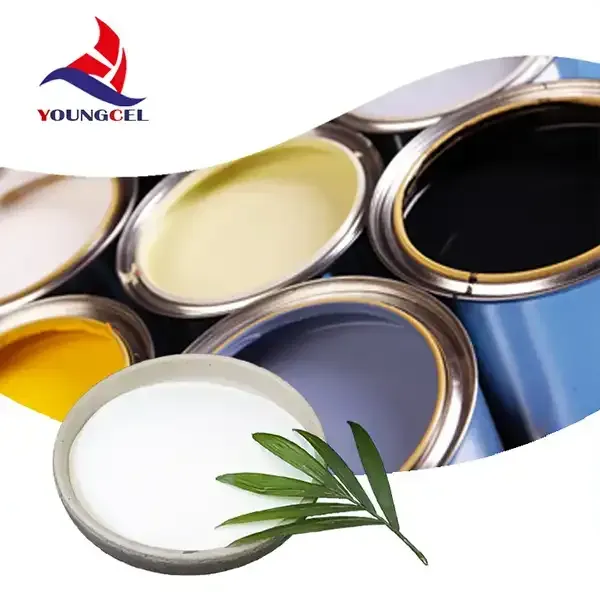Jun . 28, 2024 02:30
Back to list
HPMC An In-Depth Exploration of Hypromellose and Its Applications
HPMC, or Hydroxypropyl Methylcellulose, is a widely used pharmaceutical excipient with a myriad of applications across various industries. This synthetic polymer, derived from cellulose, is known for its exceptional properties, making it an indispensable component in many formulations.
Hydroxypropyl Methylcellulose, often referred to as HPMC, is a non-ionic, water-soluble polymer that finds its primary use in the pharmaceutical sector as a binder, disintegrant, and coating agent. Its ability to form a gel when mixed with water makes it ideal for tablet manufacturing, where it helps bind the powdery ingredients together. In addition, HPMC's film-forming property makes it a go-to choice for capsule and tablet coatings, enhancing their appearance and protecting the active ingredients from degradation.
Beyond pharmaceuticals, HPMC also plays a significant role in the food industry, where it is used as a thickening and stabilizing agent in products like jams, sauces, and ice cream. Its ability to control moisture retention and texture contributes to the overall quality and shelf life of these products.
In the construction industry, HPMC is used in mortar and plaster formulations due to its ability to improve workability, reduce water demand, and enhance the setting time and strength development. It is also employed in the production of paint, acting as a film former and improving the paint's adhesion and gloss.
The versatility of HPMC doesn't end there
The versatility of HPMC doesn't end there The versatility of HPMC doesn't end there
The versatility of HPMC doesn't end there
The versatility of HPMC doesn't end there
The versatility of HPMC doesn't end there hpmc hypromellose. It is also utilized in the cosmetics industry, where it serves as an emulsifier, thickener, and stabilizer in skincare and haircare products. Its non-irritating nature and ability to enhance product consistency make it a popular choice.
Moreover, HPMC's eco-friendly attributes have led to its use in the development of biodegradable materials, contributing to sustainable practices. As a cellulose derivative, it is renewable and has low environmental impact, aligning with the current green initiatives.
In conclusion, HPMC, with its unique properties and broad range of applications, is a testament to the power of science in transforming natural resources into valuable solutions. Its presence is felt in numerous industries, from healthcare to construction, food to cosmetics, and even in our efforts towards sustainability. As research continues to unfold the potential of this compound, the significance of HPMC in shaping modern products and processes only stands to grow.
hpmc hypromellose. It is also utilized in the cosmetics industry, where it serves as an emulsifier, thickener, and stabilizer in skincare and haircare products. Its non-irritating nature and ability to enhance product consistency make it a popular choice.
Moreover, HPMC's eco-friendly attributes have led to its use in the development of biodegradable materials, contributing to sustainable practices. As a cellulose derivative, it is renewable and has low environmental impact, aligning with the current green initiatives.
In conclusion, HPMC, with its unique properties and broad range of applications, is a testament to the power of science in transforming natural resources into valuable solutions. Its presence is felt in numerous industries, from healthcare to construction, food to cosmetics, and even in our efforts towards sustainability. As research continues to unfold the potential of this compound, the significance of HPMC in shaping modern products and processes only stands to grow.
 The versatility of HPMC doesn't end there
The versatility of HPMC doesn't end there
The versatility of HPMC doesn't end there
The versatility of HPMC doesn't end there hpmc hypromellose. It is also utilized in the cosmetics industry, where it serves as an emulsifier, thickener, and stabilizer in skincare and haircare products. Its non-irritating nature and ability to enhance product consistency make it a popular choice.
Moreover, HPMC's eco-friendly attributes have led to its use in the development of biodegradable materials, contributing to sustainable practices. As a cellulose derivative, it is renewable and has low environmental impact, aligning with the current green initiatives.
In conclusion, HPMC, with its unique properties and broad range of applications, is a testament to the power of science in transforming natural resources into valuable solutions. Its presence is felt in numerous industries, from healthcare to construction, food to cosmetics, and even in our efforts towards sustainability. As research continues to unfold the potential of this compound, the significance of HPMC in shaping modern products and processes only stands to grow.
hpmc hypromellose. It is also utilized in the cosmetics industry, where it serves as an emulsifier, thickener, and stabilizer in skincare and haircare products. Its non-irritating nature and ability to enhance product consistency make it a popular choice.
Moreover, HPMC's eco-friendly attributes have led to its use in the development of biodegradable materials, contributing to sustainable practices. As a cellulose derivative, it is renewable and has low environmental impact, aligning with the current green initiatives.
In conclusion, HPMC, with its unique properties and broad range of applications, is a testament to the power of science in transforming natural resources into valuable solutions. Its presence is felt in numerous industries, from healthcare to construction, food to cosmetics, and even in our efforts towards sustainability. As research continues to unfold the potential of this compound, the significance of HPMC in shaping modern products and processes only stands to grow. Latest news
-
Premium Detergent Grade HPMC Hydroxypropyl Methylcellulose: Superior Thickening & StabilityNewsAug.31,2025
-
HEC 100000 Hydroxyethylcellulose for Paint | Superior ThickeningNewsAug.30,2025
-
Wall Putty Rdp Powder Packaging DesignNewsAug.29,2025
-
Introduction to Hpmc Hydroxypropyl Methyl CellulosNewsAug.29,2025
-
Hpmc Industri Grade IntegrationNewsAug.29,2025
-
How to Choose the Right Construction AdhesiveNewsAug.29,2025




